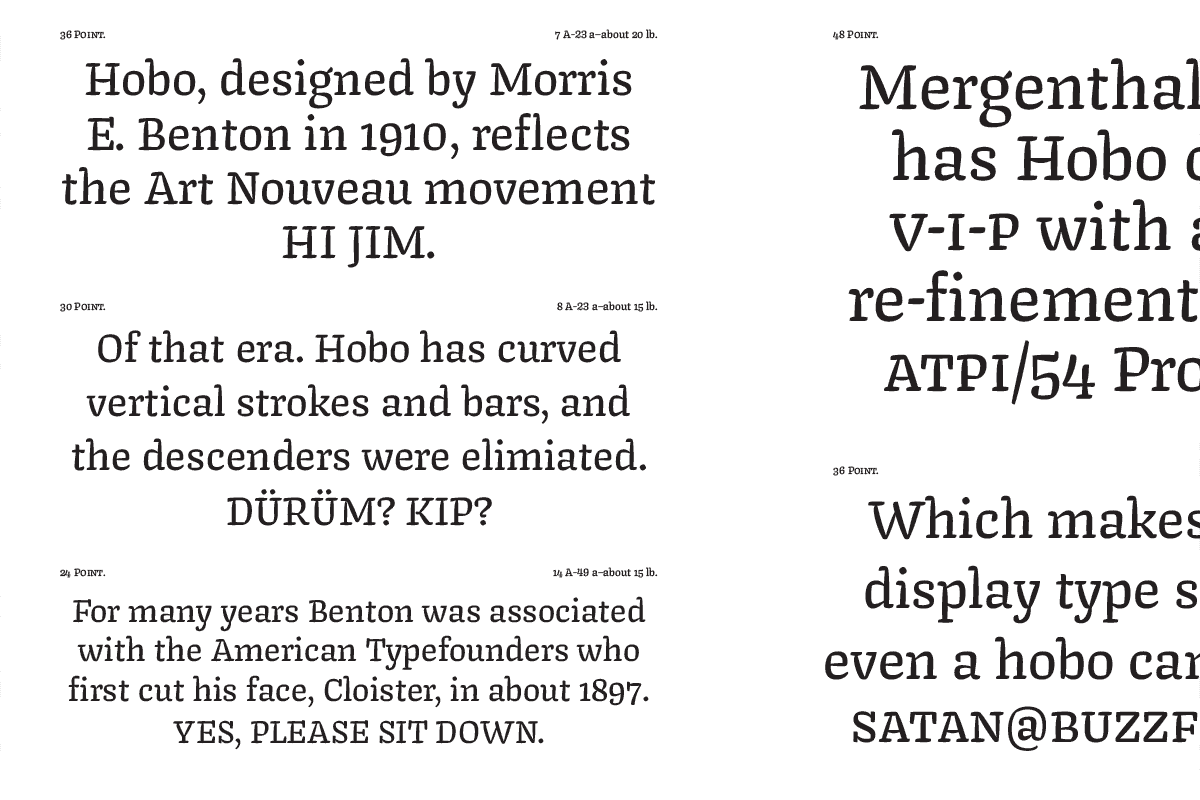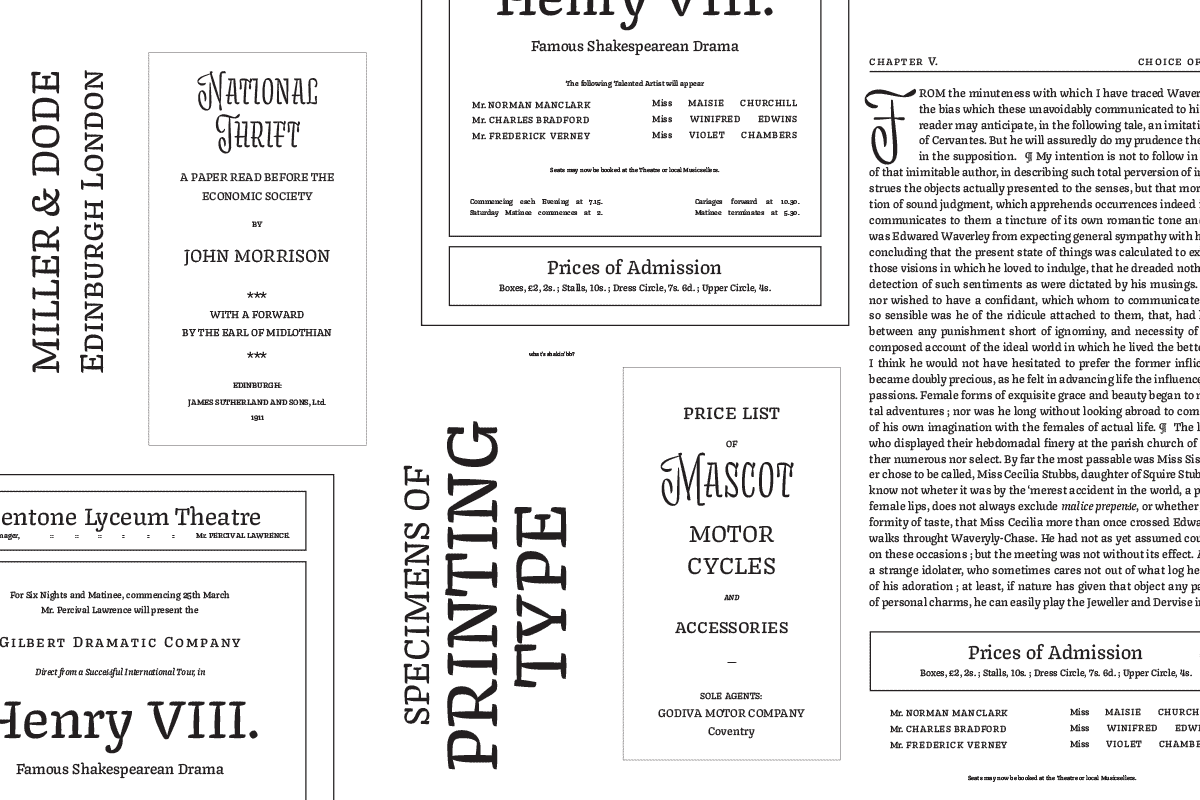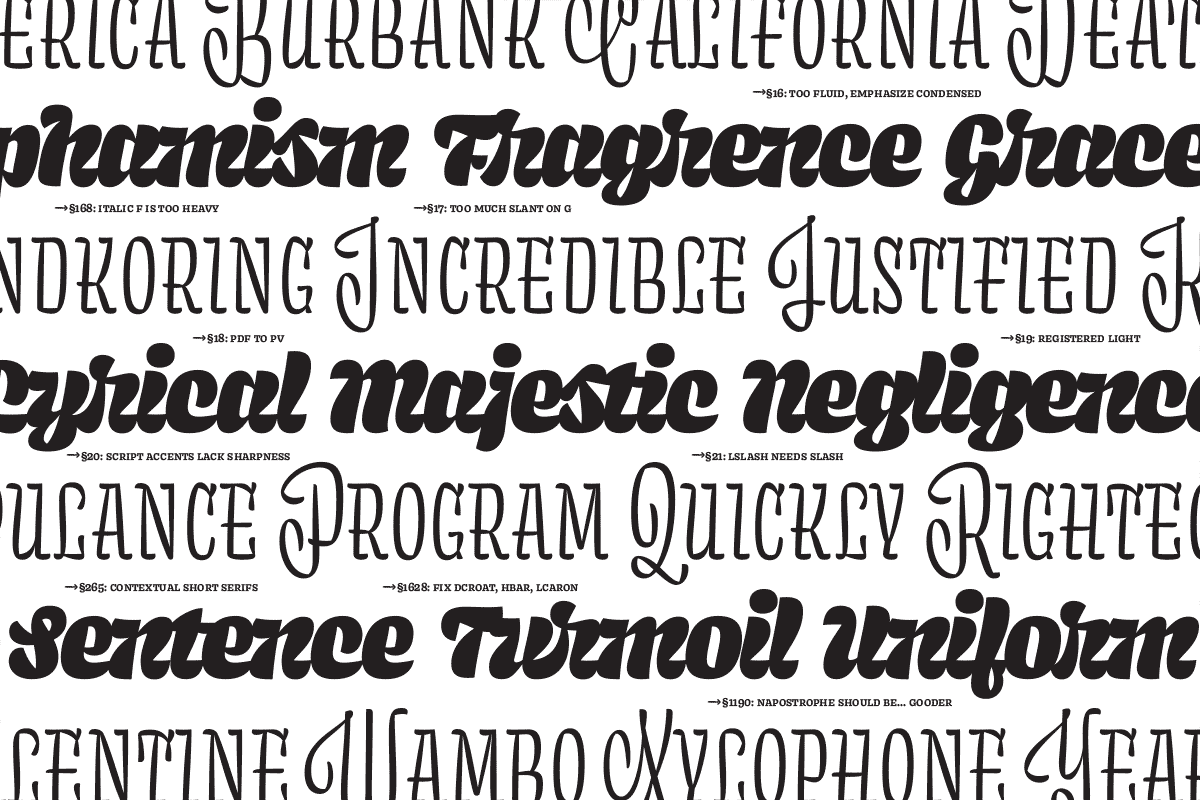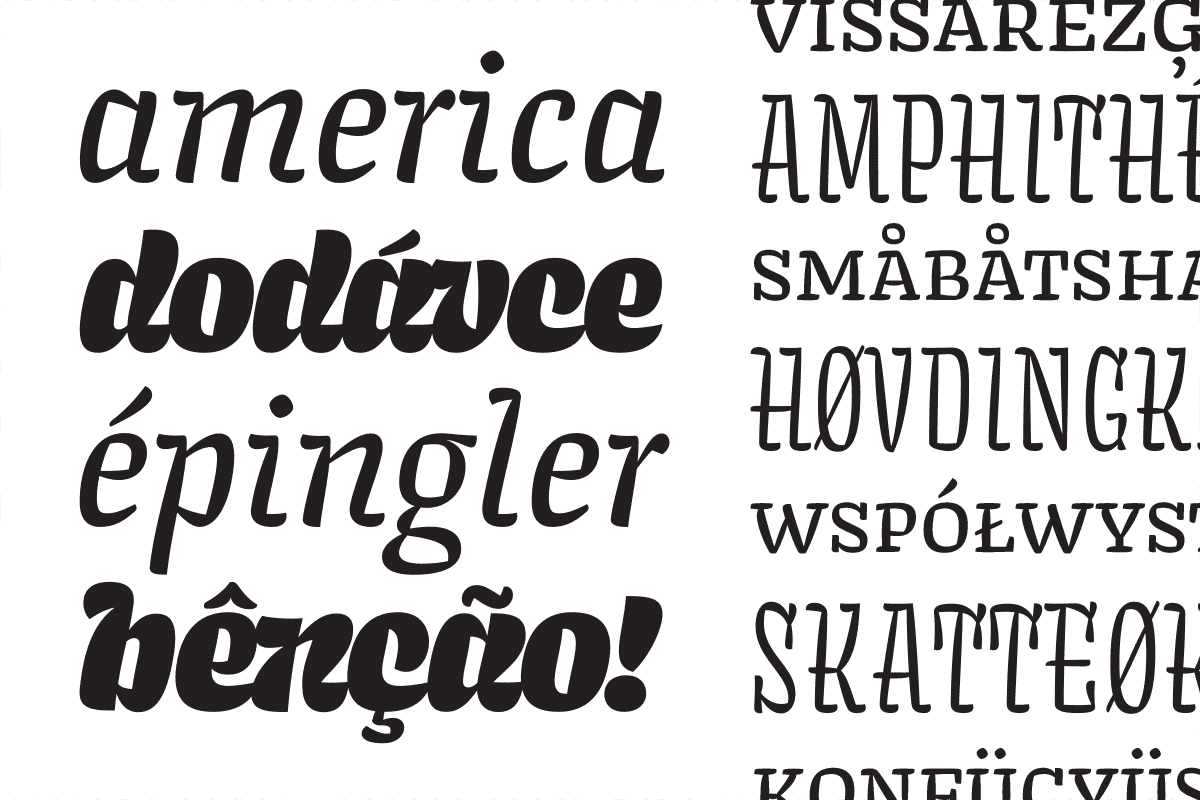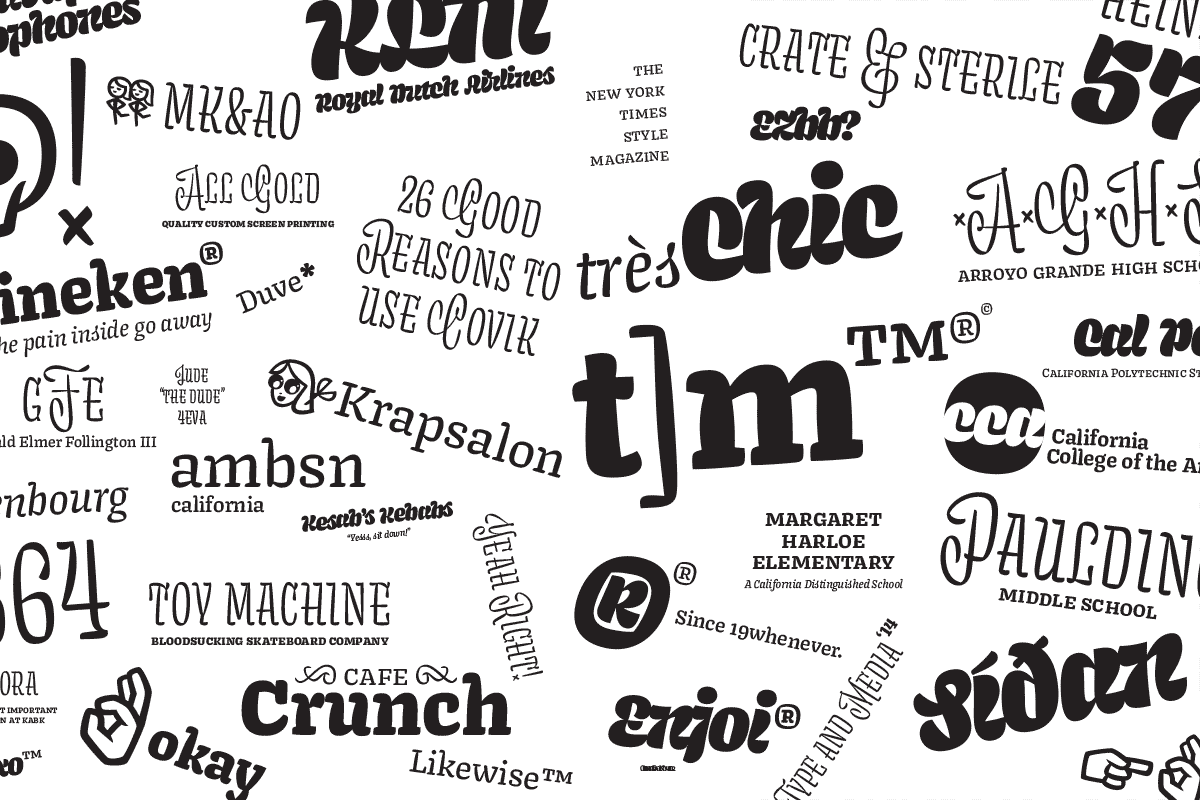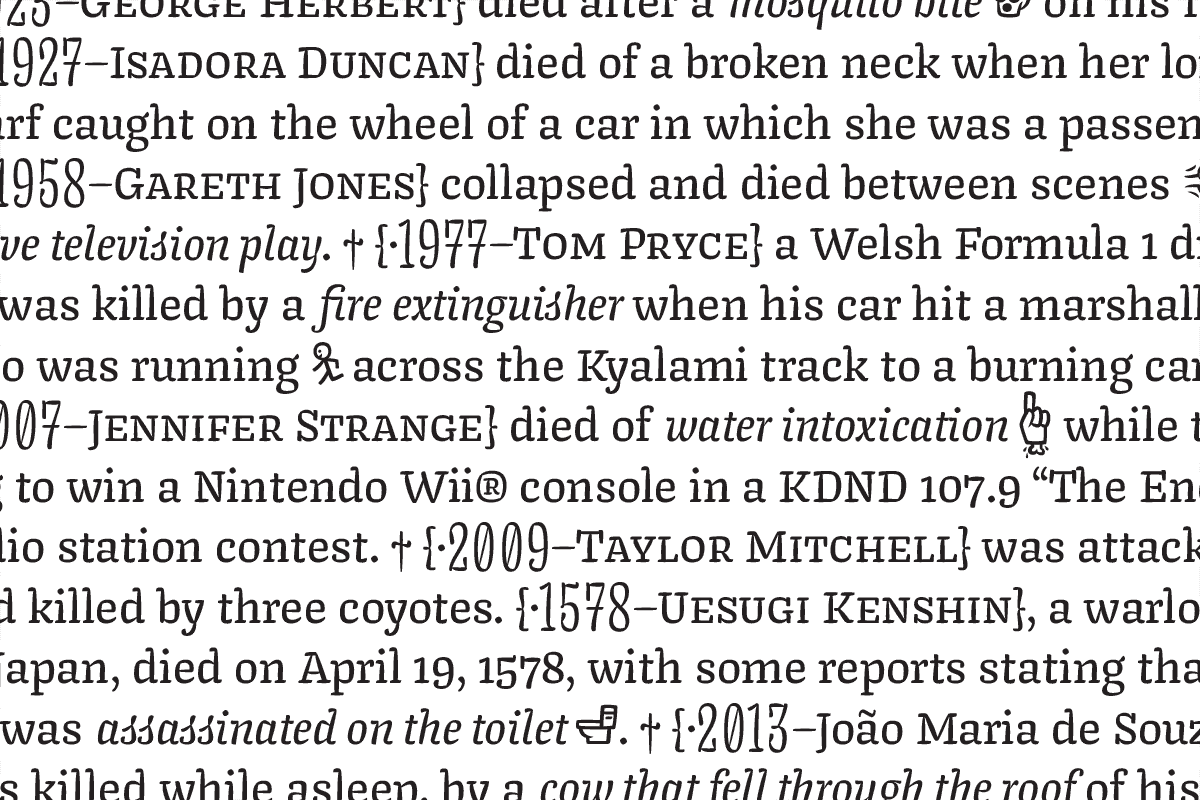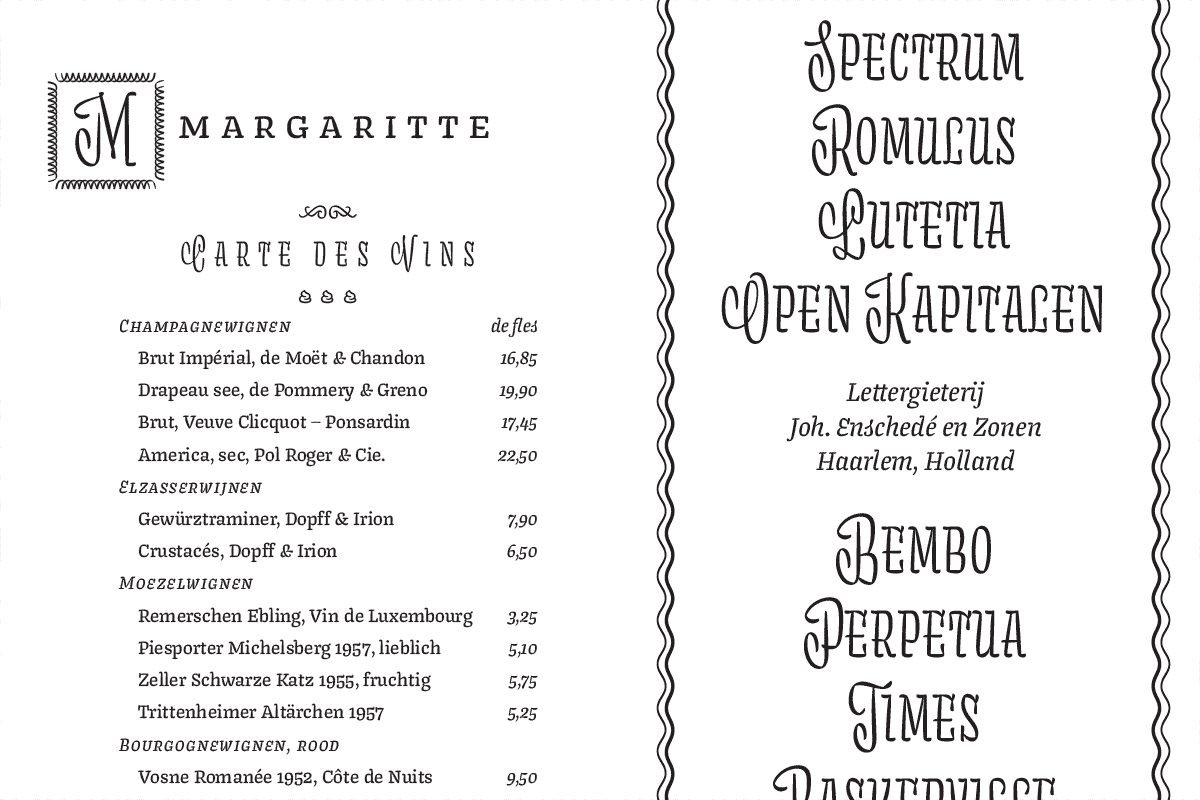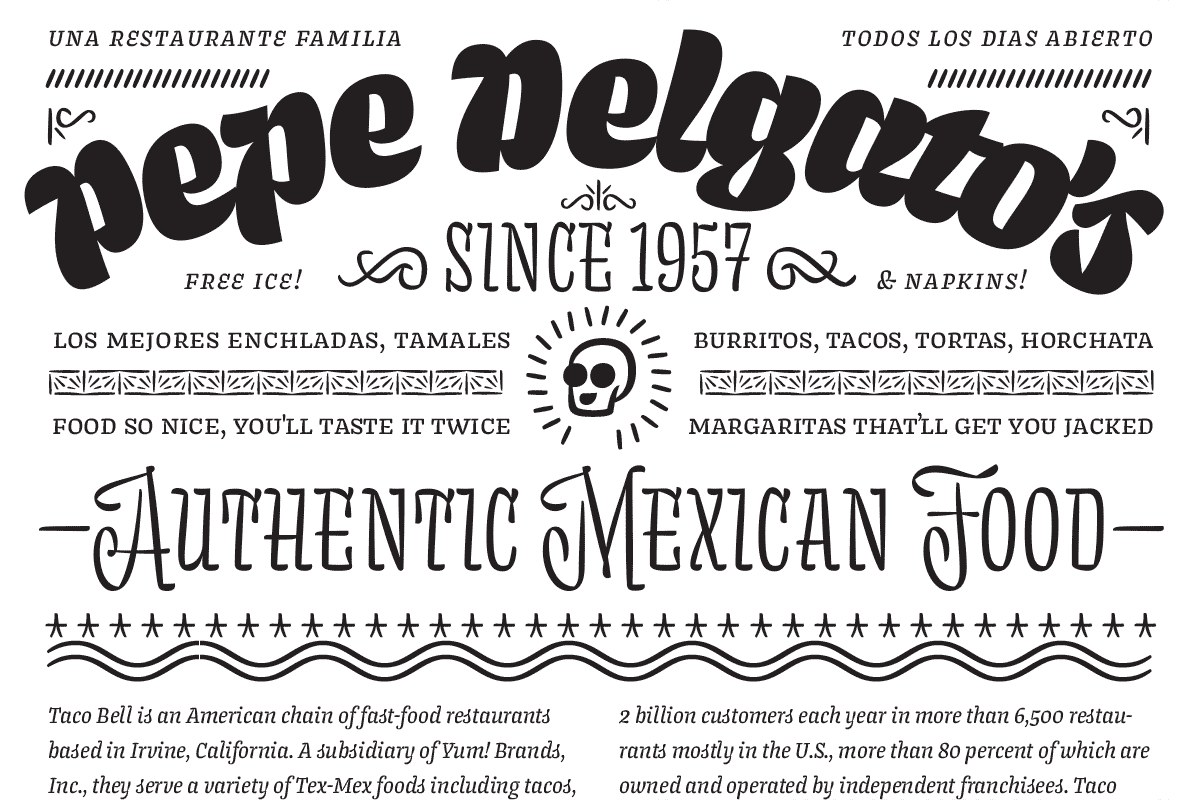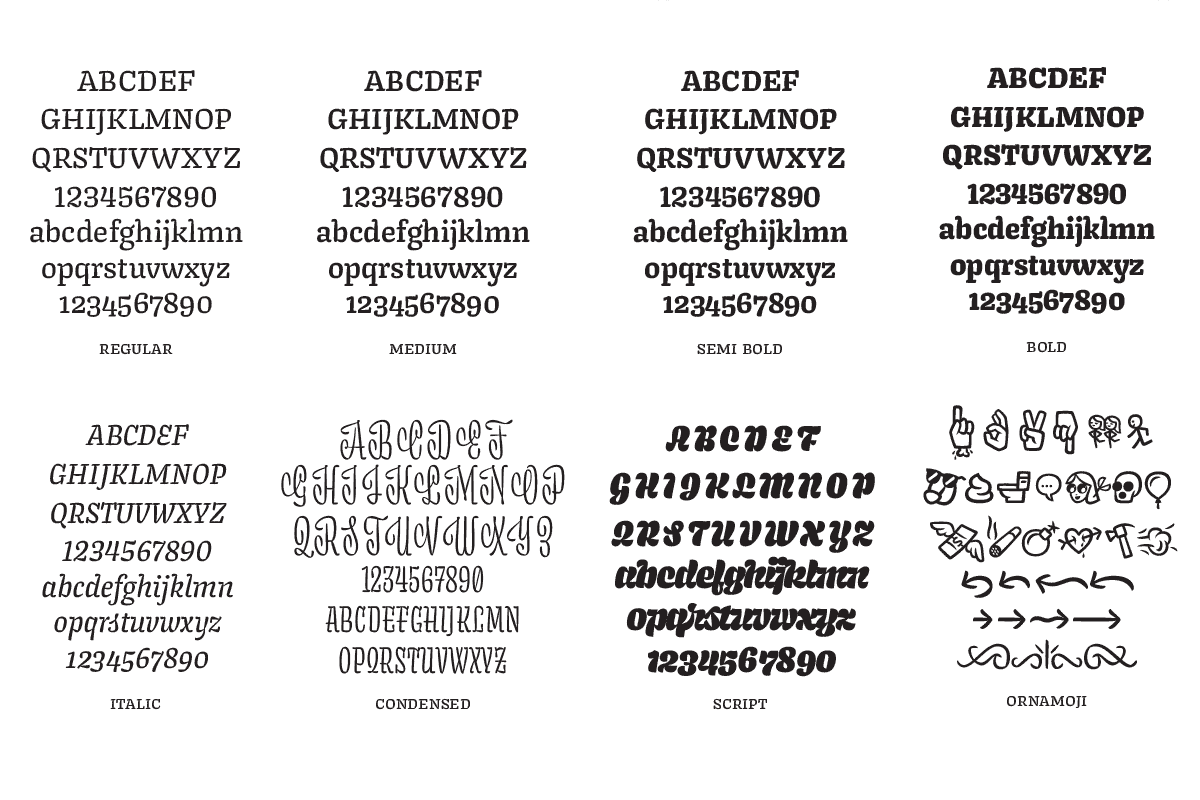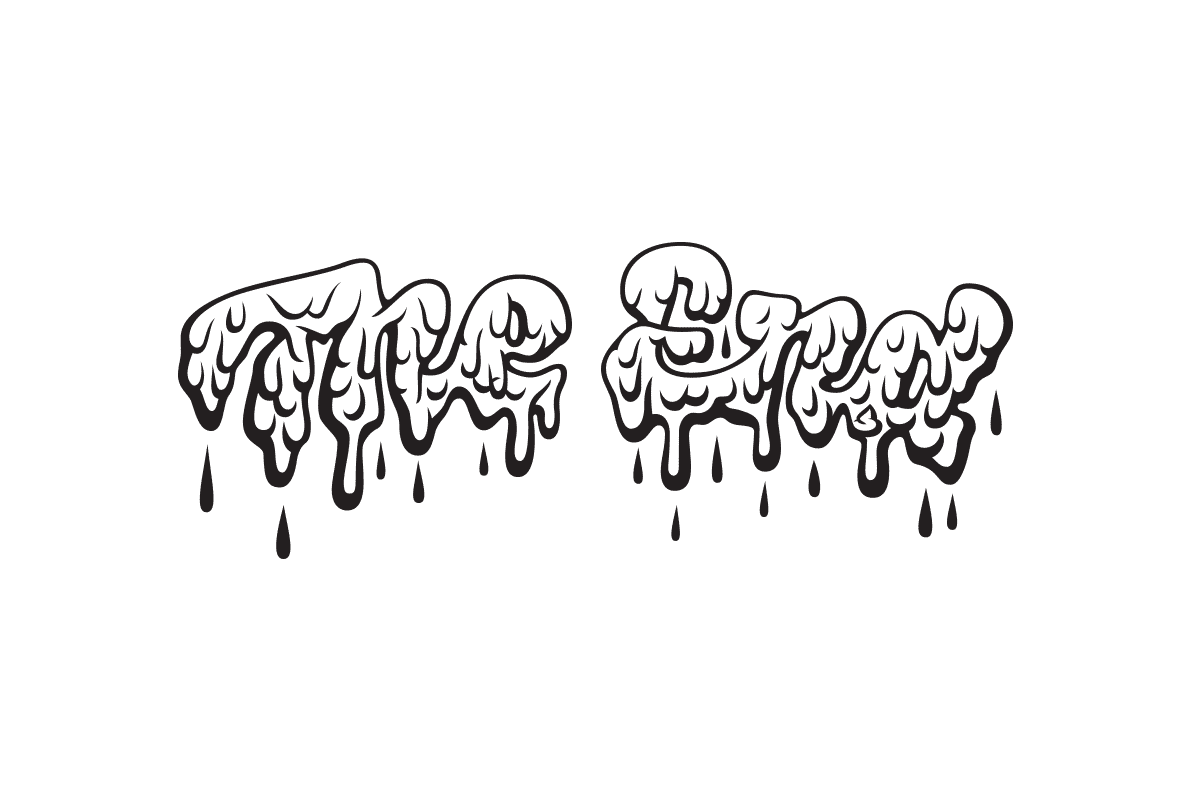You are using an outdated browser. Please upgrade your browser to improve your experience.
Covik
Covik was designed with the goal of creating a small text family with complimentary display faces which work together to create a rich typographic palette. How divergent could a style be while remaining kindred? In what ways could weight, width, proportion, and construction be played with in order to create a varied family? Potential applications are as manifold as the individual styles therein, so it might be helpful to consider what Covik would not be suitable for: bibles, legal documents, warranties, directions on how to assemble something important, funeral home logos, and websites. Everything else is fair game.
USA
James Edmondson
James Edmondson is a type designer and lettering artist based in San Francisco, California. In 2013 he graduated from California College of the Arts with a BA in graphic design, left San Francisco behind, and moved to The Hague to study under all the incredible teachers at TypeMedia, as well as Peter Verheul.
process
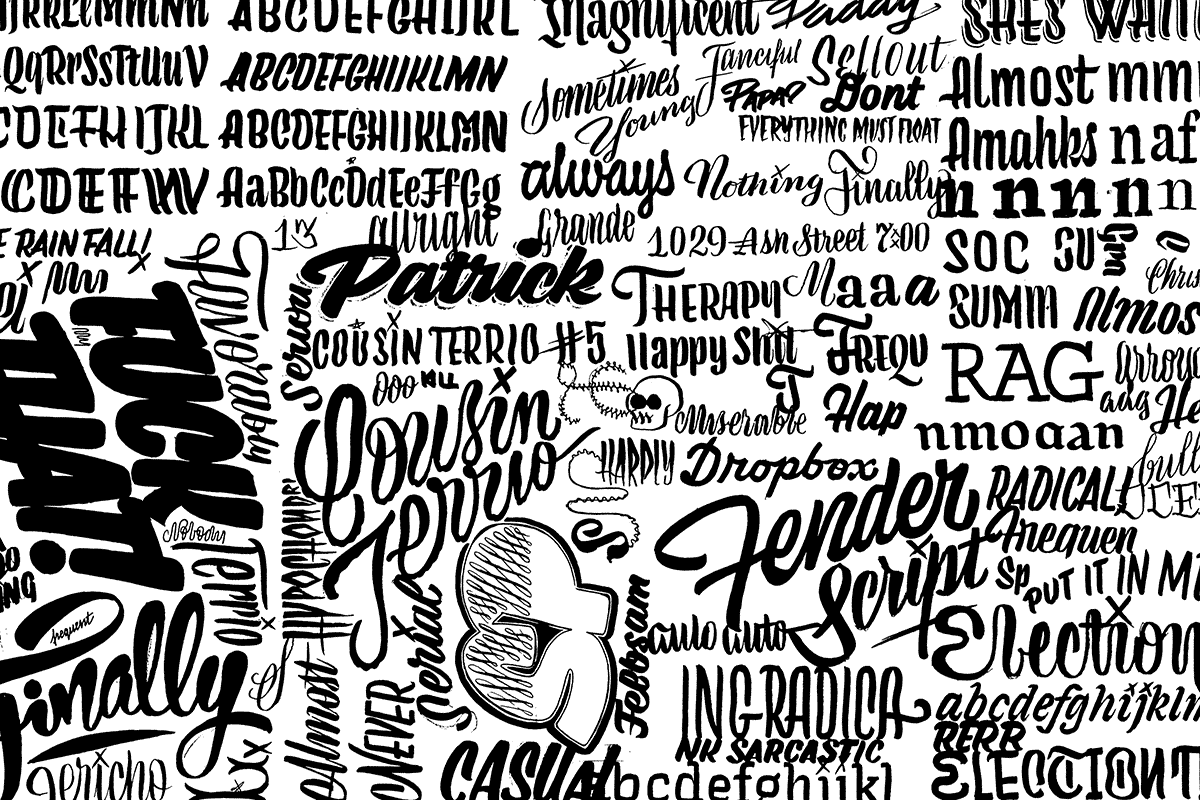
Unlike traditional type families whose members typically vary in weight and/ or width, the goal with this project was to create a robust family of different styles that complimented each other, and could be used for different purposes. To keep the family cohesive, I limited my sketching tools to just the brush pen. These initial doodles explored what the pen naturally wanted to do.
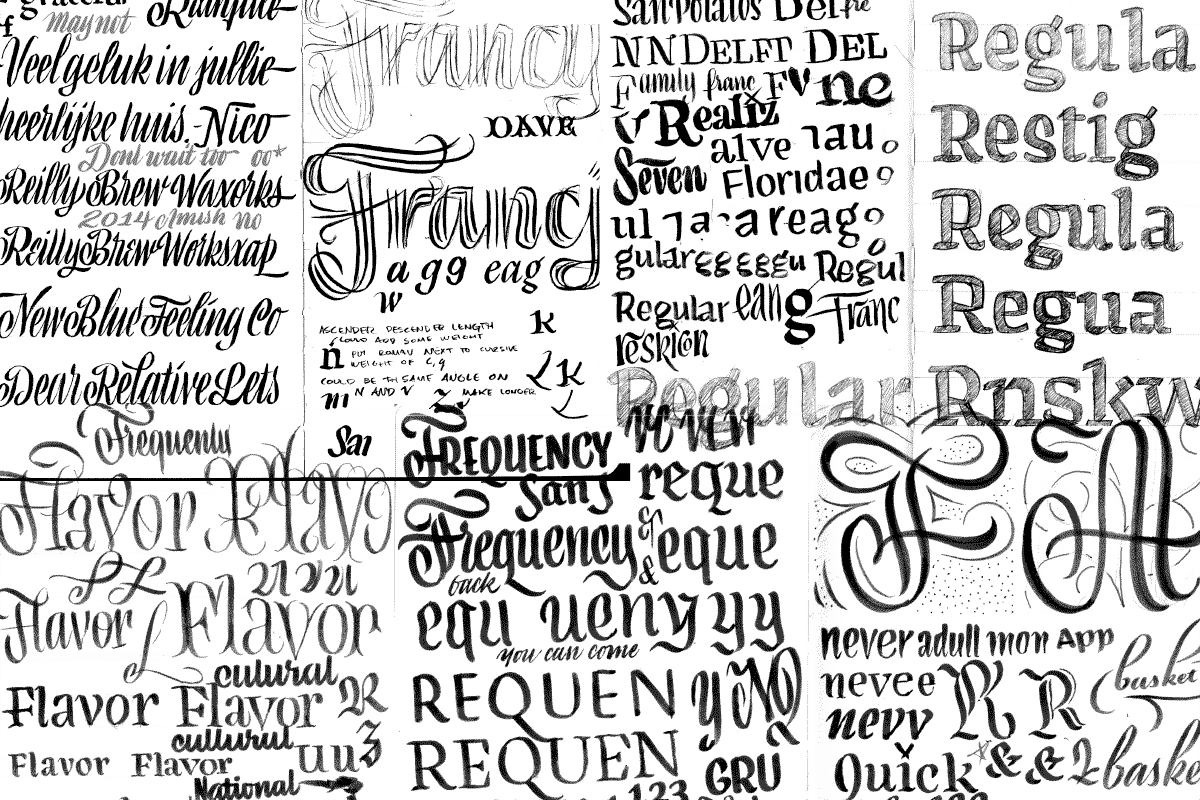
If it was even a little bit interesting, I sketched it. As ideas matured, I refined the sketch with larger pencil drawings.
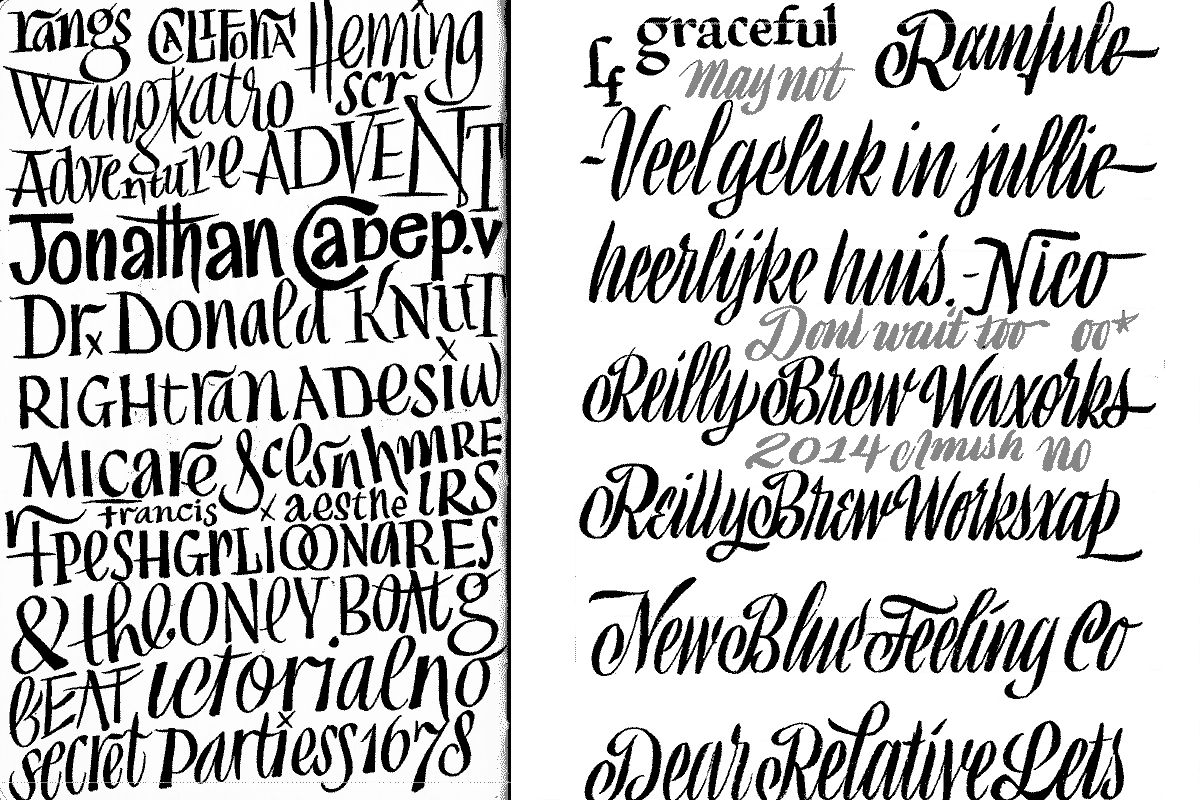
In an effort to mine the past for styles that I could steal from, I explored the work of Hans Tisdall and other mid century lettering artists.
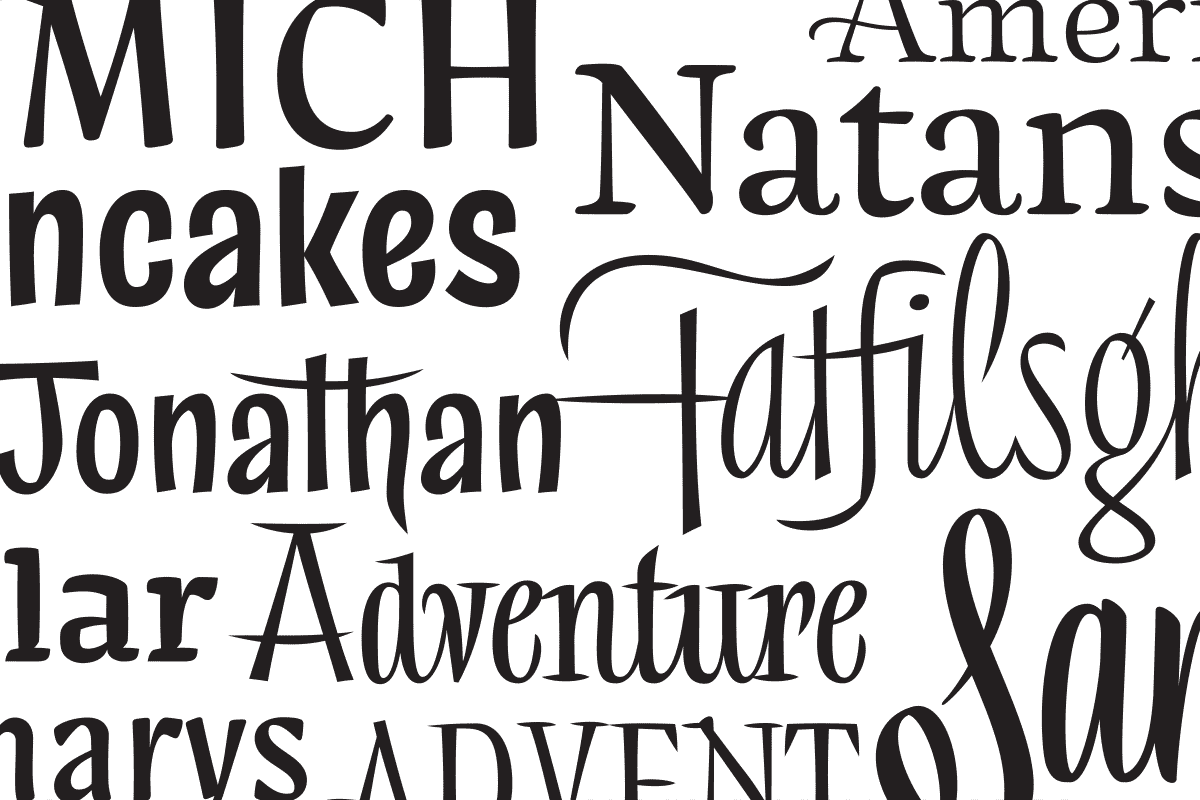
I digitized some of my lettering experiments, and tried to imagine what a whole paragraph might look like in a particular style.
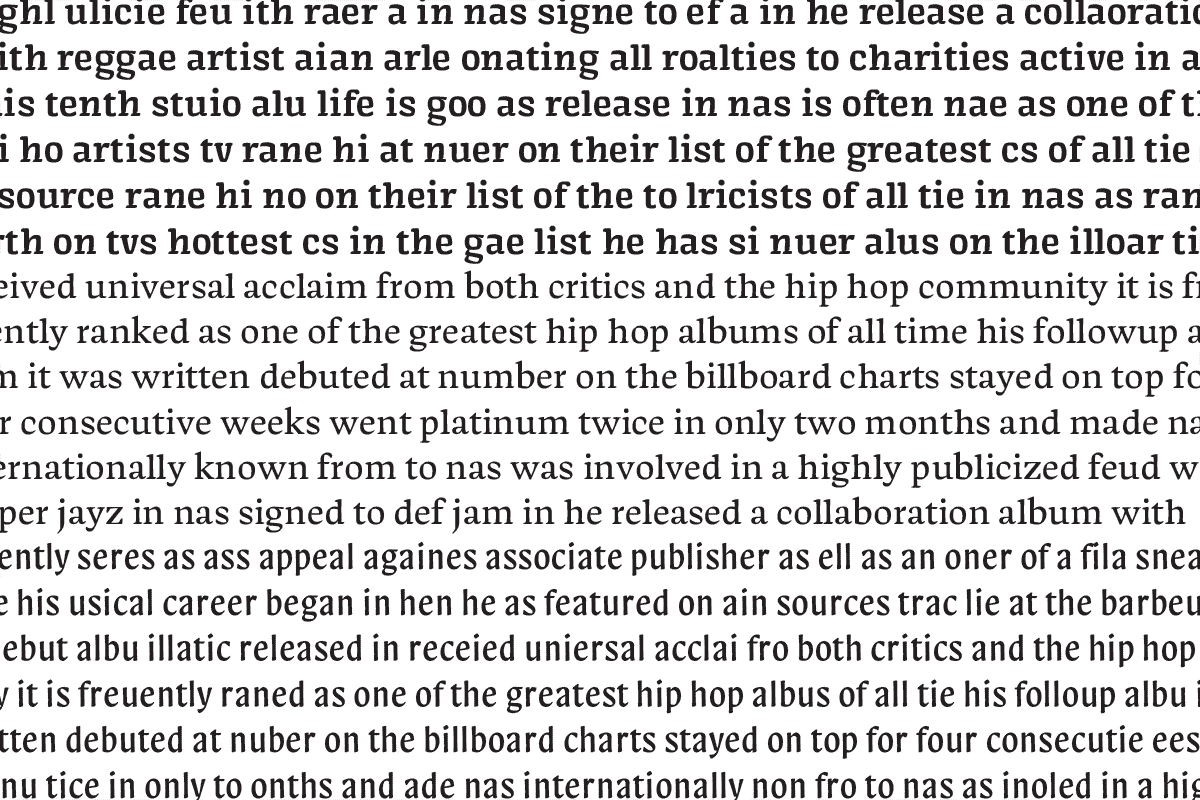
Starting with the text component seemed to make the most sense, and I turned three of my most texty lettering experiments into barebones lowercase fonts.
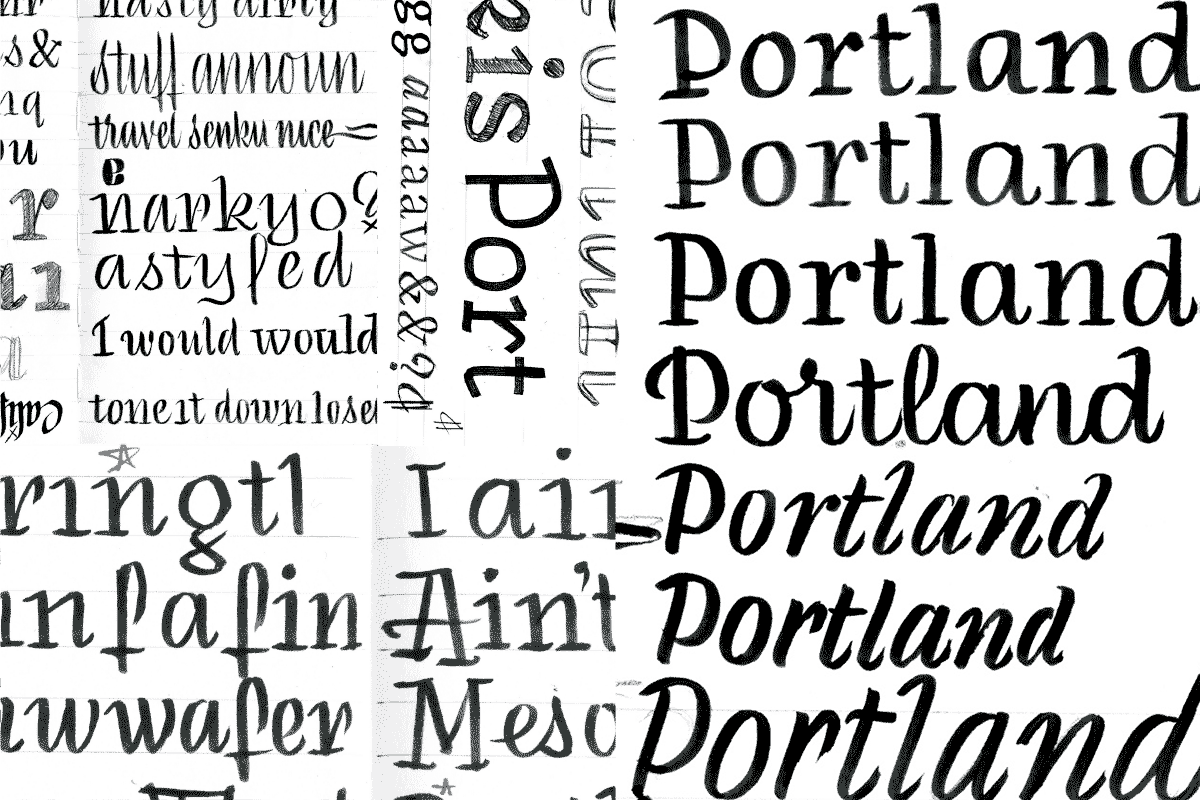
Long story short, I didn’t like any of them, so it was back to the drawing board.
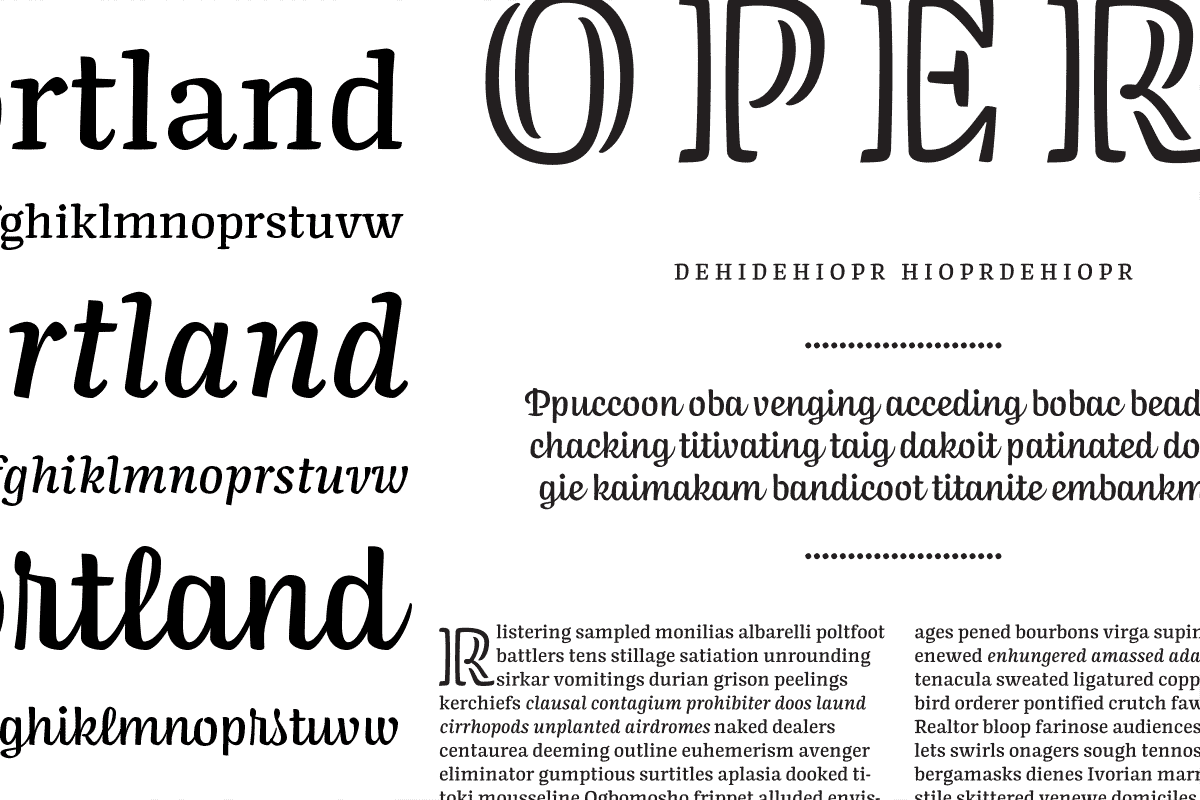
A new family emerged, featuring text and display styles that got along nicely.
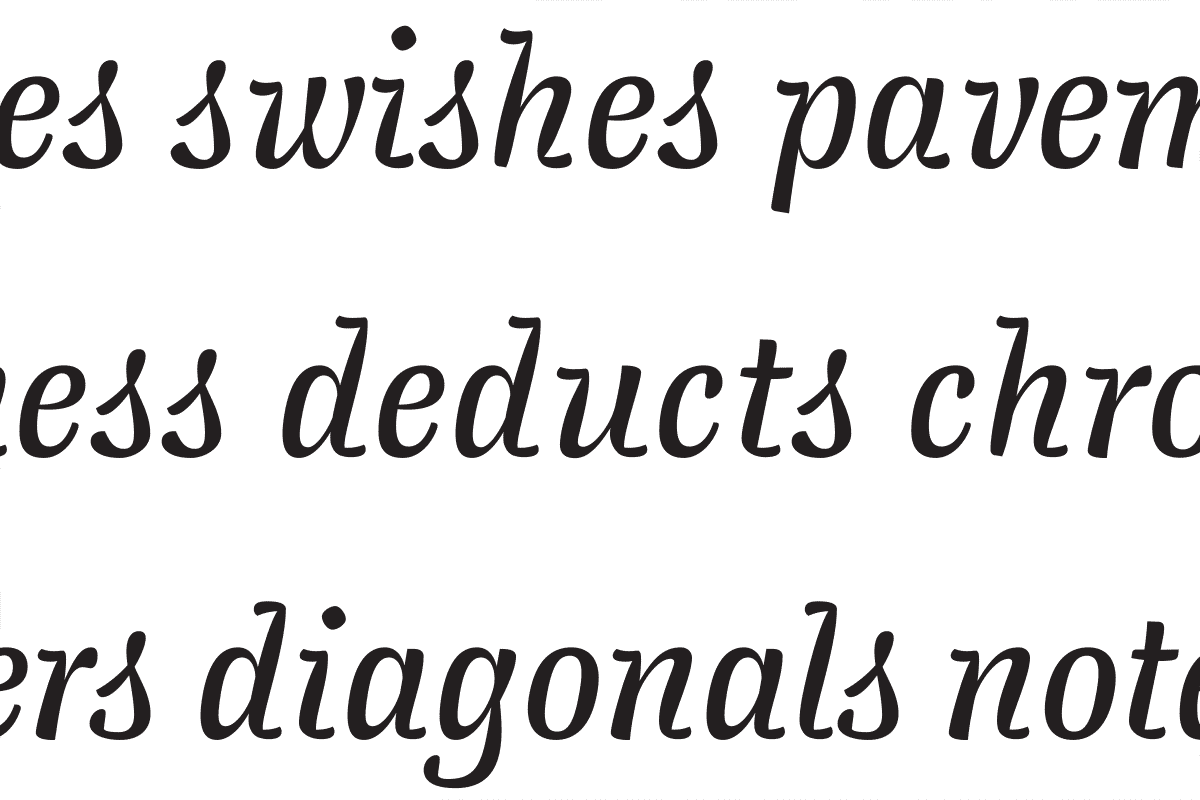
The only problem was that it was boring, and felt like it belonged in a funeral home identity. I was desperate to take the work someplace more interesting, so I played with the italic until something interesting happened. Over many edits, it turned into something a bit more sparkly. The sparkle became the driving force behind most of the design decisions that were to come.
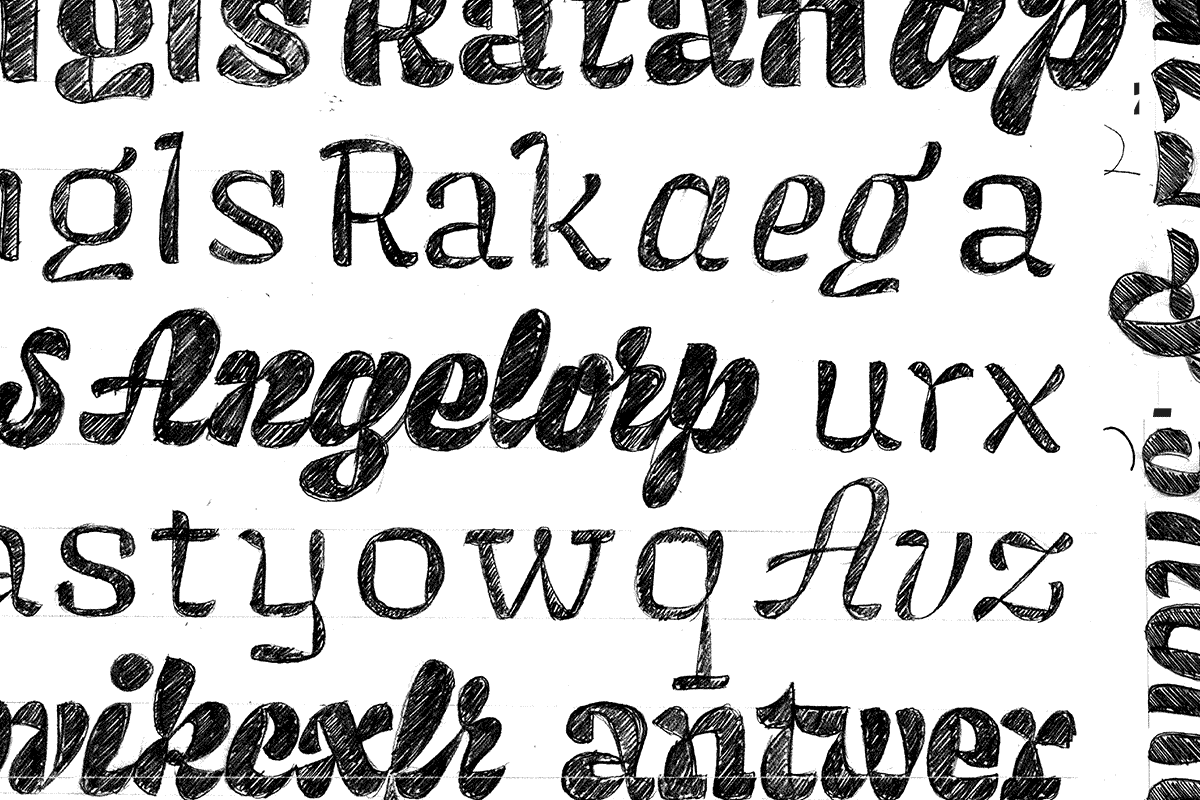
The italic then influenced the two display styles in the family.
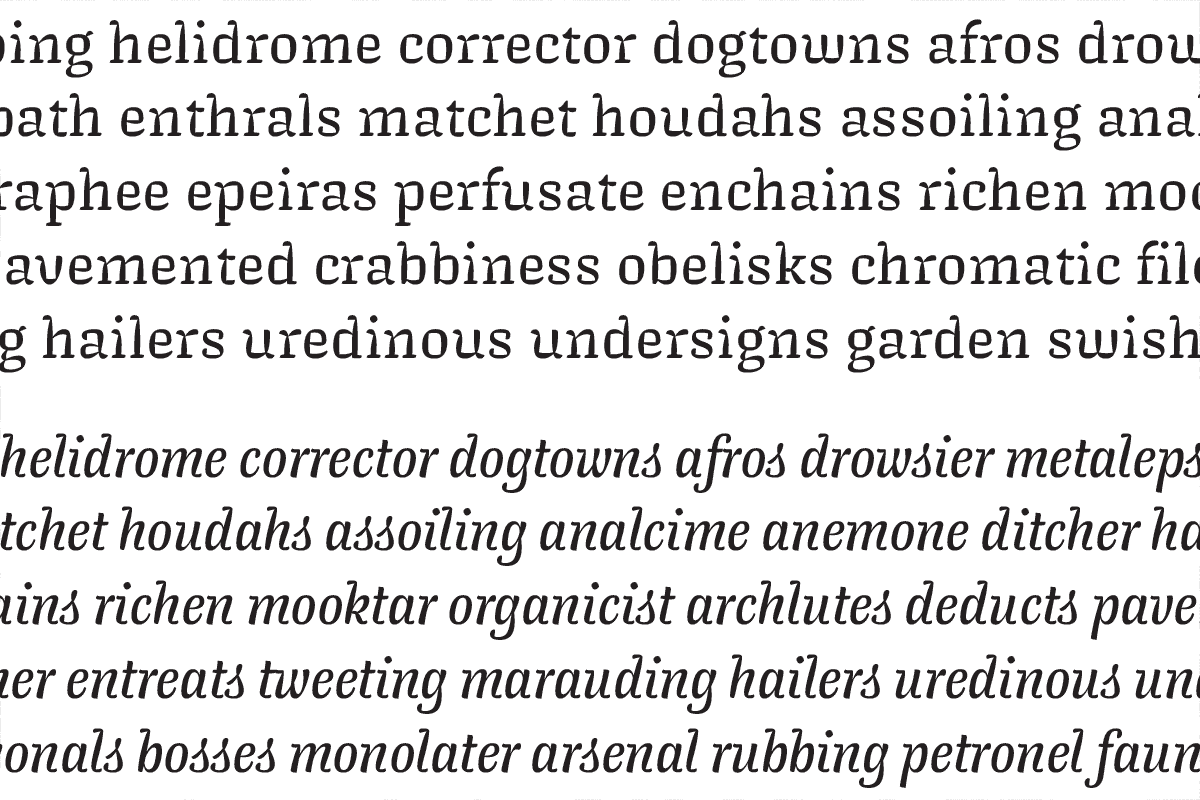
In addition to the display styles, the new italic had a big effect on the roman. Here, maybe a bit too much. After this point, it was time to dial it down, make it work at smaller sizes, and give it all the typographic niceties that are useful in a text face. There is more to the story of how this typeface grew up. If you truly are interested to learn more, please get in touch and I can send you an enormous PDF.

